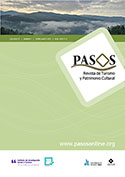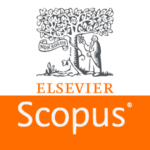De sin vergüenza a sinvergüenza: caso de estudio entre cliente-hostelero en apartamentos turísticos
DOI:
https://doi.org/10.25145/j.pasos.2025.23.007Palabras clave:
vergüenza, sinvergüenza, hostelería, beneficios, valores éticosResumen
Las relaciones entre los miembros de un grupo social/cultural han sido tema de estudio durante décadas, siendo la vergüenza uno sentimiento principal generado a partir del incumplimiento de unas normas previamente establecidas, que varían de una sociedad y generación a otra. Dada la flexibilización de valores éticos, la cultura del quejarse y el intercambio de opiniones, la vergüenza parece haberse diluido en varios ámbitos, especialmente en la rama de la hostelería, provocando beneficios para el cliente y generando sentimientos negativos para el empresario. El objetivo del estudio fue analizar la estrecha relación entre la no vergüenza y la generación el vocablo ser un sinvergüenza. El instrumento de investigación empleado para la recogida de datos fue un cuestionario basado en la escala de Likert con 5 posibilidades de respuesta en relación con las hipótesis de este estudio y una pregunta de opinión lanzada por un grupo de WhatsApp. Con el método basado en el modelo de ecuaciones estructurales (SEM-PLS), se recopilaron un total de 116 respuestas de proveedores de servicios de hostelería. Los resultados revelaron que el no tener vergüenza beneficia a los huéspedes a la hora de conseguir servicios extra sin embargo, se genera un vocablo negativo entre los hosteleros.
Descargas
Datos de publicación
Perfil evaluadores/as N/D
Declaraciones de autoría
- Sociedad académica
- PASOS. Revista de Turismo y Patrimonio Cultural
- Editorial
- Instituto Universitario de Investigación Social y Turismo. Universidad de La Laguna (España) - Instituto Universitario da Maia ISMAI (Portugal)
Citas
Ahmed, S. (2015). La vergüenza ante los demás. En S. Ahmed, La política cultural de las emociones. México. Unam. https://www.puees.unam.mx/curso2021/materiales/Sesion14/Ahmed2015_LaPoliticaCulturalDeLasEmociones.pdf
Ali, F. (2016). Hotel website quality, perceived flow, customer satisfaction and purchase intention. Journal of Hospitality and Tourism Technology, 7(2), 213–228. https://doi.org/10.1108/JHTT-02-2016-0010
Baloglu, S.,& McCleary, K.W. (1999). US International pleasure travelers´ images of four Mediterranean destinations: A comparison of visitors and non-visitors. Journal of Travel Research, 38(2), 144–152. https://doi.org/10.1177/004728759903800207
Baltes, P.B., Linderberger, U.,& Staudinger, U.M. (1999). Lifespan Psychology:
Theory and application to intellectual functioning. Annual Rev Psychology,
, 471–507. https://doi.org/10.1146/annurev.psych.50.1.471
Bastiaansen, M., Lub, X., Mitas, O., Jung, T., Ascenção, M.P., Han, D., Moilanen, T., Smit, B.,& Strijbosch, W. (2019). Emotions as core building blocks of an experience. International Journal of Contemporary Hospitality Management, 31(2), 651–668. https://doi.org/10.1108/IJCHM-11-2017-0761
Bentler, P.M.,& Bonnet, D.G. (1980). Significance tests and goodness-of-fit in the analysis of covariance structures. Psychological Bulletin, 88, 588–606. https://doi.org/10.1037/0033-2909.88.3.588
Bigné, E., Chumpitaz, R., Andreu, L.,& Swaen, V. (2005). Percepción de la responsabilidad social corporativa: un análisis cross-cultural. UCJC Business and Society Review 1(5). https://journals.ucjc.edu/ubr/article/view/516
Brown, B. (2007). I Thought It Was Just Me (but it isn't): Making the Journey from "What Will People Think?" to "I Am Enough". Avery.
Camargo, L.O.L. (2015). Os interstícios da hospitalidade. Revista Hospitalidade, 12(especial), 42–69. http://www.spell.org.br/documentos/ver/35195/os-intersticios-da-hospitalidade-/i/pt-br
Camisón, C., Navarro, M.,& López, A. (2009). Sistemas de gestión de la calidad y desempeño: importancia de las prácticas de gestión del conocimiento y de I+D. Revista Europea de Dirección y Economía de la Empresa, 18(1), 123–134. http://hdl.handle.net/10234/33356
Carmines, E.G.,& Zeller, R.A. (1979). Reliability and validity assessment (Vol. 17). California: SAGE Publications.
Chen, Y.,& Tussyadiah, I. (2021). Service failure in peer-to-peer accommodation. Annals of Tourism Research, Elsevier, 88(C). https://doi.org/10.1016/j.annals.2021.103156
Chin, W. W. (1998). The partial least squares approach to structural equation modeling. Modern Methods for Business Research, 295(2), pp. 295–336. https://psycnet.apa.org/record/1998-07269-010
Chung, H. (2012). Measuring Flexicurity: Precautionary Notes, a New Framework, and an Empirical Example. Social Indicators Research, 106(1), 153–171. https://doi.org/10.1007/s11205-011-9800-2
Creswell, J.W.,& Creswell, J.D. (2018) Research Design: Qualitative, Quantitative, and Mixed Methods Approaches. Sage, Los Angeles.
Crompton, J.L. (1979). Motivations for pleasure vacation. Annals of Tourism Research, 6(4), 408–424.
https://doi.org/10.1016/0160-7383(79)90004-5
Cruz, I.,& Galán, J. (2019). Determinantes del comportamiento del consumidor en México. Acta Universitaria, 29(1), 1–17. https://doi.org/10.15174au.2019.2076
Dahnil, M.I, Kamarul, M., Langgat, J.,& Fabeil, N. (2014). Factors influencing SMEs adoption of social media marketing. Procedia - Social and Behavioral Sciences, 148, 119–126.
https://doi.org/10.1016/j.sbspro.2014.07.025
Del Bosque, I.R.,& Martin, H.S. (2008). Tourist satisfaction a cognitive-affective model. Annals of Tourism Research, 35(2), 551–573.http://dx.doi.org/10.1016/j.annals.2008.02.006
Dunlap, R.E., Van Lieres, K.D., Mertig, A.G.,& Jones, R.E. (2000). Measuring endorsement of the new ecological Paradigm: a revisited neP. Journal of Social Issues, 56(3), 425–442. https://doi.org/10.1111/0022-4537.00176
Flores, C. (2019). Gestionar óptimamente las reclamaciones para alcanzar la satisfacción del cliente. Aenor. Revista de la evaluación de la conformidad, (344), 23-27.https://revista.aenor.com/downloads/re-
vistas/344.pdf?output=52e58a93ecacb373f202592e64b1822e
Fornell, C.G., & Bookstein, F. L. (1982). Two structural equation models: LISREL and PLS
applied to consumer exit-voice theory. Journal of Marketing Research, 19(4), 440–452.
Gerhards, J. (1986). Georg Simmel’s contribution to a theory of emotions. Social Science Information 25(4), 901–924. https://doi.org/10.1177/053901886025004007
Goss, K., Gilbert, P., & Allan, S. (Eds.). (1994). Shame: Interpersonal Behavior, Psychopathology, and Culture. Oxford University Press.
Hair, J. F., Howard, M. C., & Nitzl, C. (2020). Assessing measurement model quality in PLS-SEM
using confirmatory composite analysis. Journal of Business Research, 109, 101–110. https://doi.org/10.1016/j.jbusres.2019.11.069
Henseler, J. (2021). Composite-based structural equation modeling: Analyzing latent and emergent
variables. New York: Guilford Press.
Hsiao, K.L., Huang, T.C., Chen, M.Y.,& Chiang, N.T. (2018). Understanding the behavioral intention to play Austronesian learning games: from the perspectives of learning outcome, service quality, and hedonic value. Interactive Learning Environments, 26(3), 372–385. https://discovery.dundee.ac.uk/ws/portalfiles/portal/51952060/scoping_review.pdf
Kincl, T.,& Štrach, P. (2018). Gender differences in online customer satisfaction: the asymmetric and nonlinear effect. Services Marketing Quarterly,39(3), 157–174.https://doi.org/10.1080/15332969.2018.1471954
Nathanson, D. L. (1987). The many faces of shame. Guilford Press.
Nepstad, S. (2004). Convictions of the Soul. New York: Oxford Univ. Press.
Nunberg, G. (2018). The social life of slurs. En D.Fogal, D.W. Harris y M. Moss, (Eds.),New work on speech acts (pp. 237–295). Oxford University Press. https://doi.org/10.1093/oso/9780198738831.003.0010
Orlando, E.,& Saab, A. (2019). Términos peyorativos de grupo, estereotipos y actos de habla. Crítica. Revista Hispanoamericana de Filosofía, 51(153). https://doi.org/10.22201/iifs.18704905e.2019.1147
Prahalad, C.K.,& Ramaswamy, V. (2004). Co-Creating Unique Value With Customers. Strategy & Leadership. 32, 4–9. https://doi.org/10.1108/10878570410699249.
Quan, S.,& Wang, N. (2004). Towards a structural model of the tourist experience: An illustration from food experiences in tourism. Tourism Management, 25(3), 297–305. https://doi.org/10.1016/S0261-5177(03)00130-4.
Real academia española (s.f.). Sinvergüenza. En el Diccionario Rae. https://dle.rae.es/sinverg%C3%BCenza
Ryu, K., Han, H.,& Jang, S. (2010). Relationships among hedonic and utilitarian values, satisfaction and behavioral intentions in the fast-casual restaurant industry. International Journal of Contemporary Hospitality Management, 22(3), 416–432. https://doi.org/10.1108/09596111011035981
Sabido Ramos, O. (2019). El análisis sociológico de la vergüenza en Georg Simmel. Una propuesta para pensar el carácter performativo y relacional de las emociones”. Digithum 23(1), 1–15. https://doi.org/10.7238/d.v0i23.3148
Sánchez González, M.G. (2021). Tesis doctoral "La música como vehículo de formación ética en los jóvenes". Universidad de Extremadura. http://hdl.handle.net/10662/12659
Sans, A.A.,& Domínguez Quaglieri, A. (2016). Unravelling Airbnb: Urban perspectives from Barcelona. Reinventing the Local in Tourism: Producing, Consuming and Negotiating Place. Channel View Publications, 209–228. https://doi.org/10.21832/9781845415709-015
Sarstedt, M., Hair, J.F., Ringle, C.M., Thiele, K.O.,& Gudergan, S.P. (2016). Estimation issues
with PLS and CBSEM: Where the bias lies! Journal of Business Research, 69(10), 3998–4010. https://doi.org/10.1016/j.jbusres.2016.06.007
Scheff, T. (1990). Shame and conformity: The deference-emotion system: En Microsociology. Discourse, Emotion, and Social Structure, 71-95. Chicago: The University of Chicago Press.
Schwartz, S.H.,& Howard, J.A. (1981). A normative decision-making model of altruism. In J.P. Rushton & R.M. Sorrentino, Eds., Altruism and Helping Behavior: Social, Personality, and Developmental Perspectives, 189–211. Lawrence Erlbaum.
Seebach, S. (2017). Love and Society: Special Social Forms and the Master Emotion. Nueva York/Londres: Routledge.
Sepúlveda, C., González, J.,& Gallego, J. (2019). Dinámica del bienestar social en Bogotá y su región. Universidad del Rosario. https://doi.org/10.12804/cc9789587843620
Sheldon, K., Turban, D., Brown, K., Barrick, M.,& Judge, T. (2003). Applying self-determination theory to organizational research. Research in Personnel and Human Resources Management, 22, 357–393. https://doi.org/10.1016/S0742-7301(03)22008-9
Simmel, G., Vernik, E.,& Ackermann Pilári, Al. (2018). Cuestiones fundamentales de sociología. Editorial Gedisa.
Singh, A.,& Vigneswara, I. (2019). Predicting consumer’s complaint behavior in telecom services: an empirical study of India, Sri Lanka and Bangladesh. En S. Satapathy y A. Joshi (eds.) Information and Communication Technology for Intelligent Systems. Smart Innovations, Systems and Tecnologies,465–472, Singapur: Springer.
Sosa, D. (2018). Introduction. En Sosa D. (Ed.). Bad Words. Philosophical Perspectives On Slurs, 1–5. Oxford: Oxford University Press. https://doi.org/10.1093/oso/9780198758655.001.0001
Štefko, R., Dorcak, P.,& Pollak, F. (2011). Shopping on the internet from the point of view of customers. Polish Journal of Management Studies, 4(1), 214–222.
Sthapit, E., Björk, P., Coudounaris, D.N.,& Stone, M.J. (2022). A new conceptual framework for memorable Airbnb experiences: guests’ perspectives. International Journal of Culture, Tourism and Hospitality Research, 16(1), 75–86. https://doi.org/10.1108/IJCTHR-01-2021-0002
Stone, M. (1974). Cross-validatory choice and assessment of statistical predictions. J. R. Stat. Soc. Ser. B 36, 111-133. https://doi.org/10.1111/j.2517-6161.1974.tb00994.x
Sturienė, U. (2019). Internet marketing tools. Vilnius University Open Series, 2, 67–74. https://doi.org/10.15388/OpenSeries.2019.18406
Tangney, J. P., & Dearing, R. L. (2003). Shame and Guilt. Guilford Press.
Thompson, R.J., Payne, S.C.,& Taylor, A.B. (2015). Applicant attraction to flexible work arrangements: Separating the influence of flextime and flexplace. Journal of Occupational and Organizational Psychology, 88(4), 726–749. https://doi.org/10.1111/joop.12095
Van Riel, C.B.M.,& Fombrun, C.J. (2007). Essentials of corporate communication: Implementing practices for effective reputation management (1st ed.). Routledge. https://doi.org/10.4324/9780203390931
Wahyuni, N., Wardana, I., Yasa, N.,& Sukaatmadja, P. (2020). The effect of culture dimension in digitalization era on the complaint behavior in hotel industry. International journal of Data and Network Science, 4(4), 347–356. https://doi.org/10.5267/j.ijdns.2020.9.004
Wong, K.K.K. (2013). Partial least squares structural equation modeling (PLS-SEM) techniques using SmartPLS. Marketing Bulletin, 24(1), pp.1–32.
Xie, K.,& Zhang, Z. (2014). The business value of online consumer reviews and management response to hotel performance. International Journal of Hospitality Management, 43, 1–12. https://doi.org/10.1016/j.ijhm.2014.07.007
Yin, S.,& Kaynak, O. (2015). Big Data for modern industry: Challenges and trends [Point of View] Proceedings of the IEEE, 203(2), 143–146. https://doi.org/10.1109/JPROC.2015.2388958
Descargas
Publicado
Cómo citar
Número
Sección
Licencia
Derechos de autor 2024 María Gemma Sánchez González

Esta obra está bajo una licencia internacional Creative Commons Atribución-NoComercial-SinDerivadas 4.0.
Confirmo que el trabajo es original (de mi/nuestra autoría), y que no se someterá a otras revistas o publicaciones hasta la resolución definitiva del proceso de revisión en PASOS, RTPC.
Autorizo la publicación de mi trabajo por PASOS, RTPC de acceso abierto y gratuito en cualquiera de los formatos que estime oportunos, por un plazo indeterminado y a título de colaboración no remunerada.
Asimismo, el/los autor/es entiende/n que el trabajo publicado podrá vincularse o depositarse en cualquier servidor o ser incluido en otras publicaciones (republicación), siempre y cuando el nuevo lugar y/o la nueva edición referencie la publicación original y reconozca la autoría y la propiedad del copyright de las publicaciones de PASOS RTPC.
Los/as autores/as entienden que se realizará una comprobación de plagio-autoplagio, pudiendo retirarse el artículo en cualquier momento del flujo editorial










